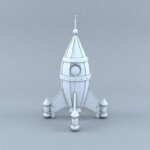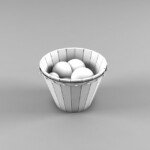Powering your small business: A practical guide to CNC machine investment and smart outsourcing
Carrying out or expanding a large-scale manufacturing business often depends on efficient and precise production. CNC (Computer Numerical Control) Processing has evolved from a luxury of industrial giants to an accessible powerhouse for ambitious small businesses. However, browsing the world of CNC machines involves balancing capabilities, costs, space and expertise. This guide unveils the introduction to the process, highlighting top machine competitors targeting workshop restrictions, while also revealing when outsourcing, especially experts like Greatlime, may be a smarter move rather than a straight purchase.
Why the CNC Machine is a small game changer:
- Accuracy and consistency: Eliminate human errors and make sure each section meets the exact specifications – critical for quality control and reputation.
- efficiency: Automate complex tasks, greatly reducing production time per unit and increasing output.
- Complexity release: Create complex geometry and features through manual machining that are impossible or expensive.
- Material versatility: Work confidently with metal, plastic, wood and composites.
- Scalability: Smooth transition from prototypes to small batches without the need for redecoration overhead.
Main precautions before purchasing:
- Budget: Computer costs, basic tools (Vises, Collets, Cutters), software (CAD/CAM), installation and ongoing maintenance/consumables.
- Workspace: Evaluate available floor space, power requirements (usually 220V+ single phase/three phase) and ventilation/fume extraction requirements.
- Material: What do you mainly want to cut? Aluminum requires different machine robustness than wood or soft plastic.
- Functional requirements: Simple 2D configuration file? Complex 3D outlines? Behind the clothes? Match the machine’s shaft (3, 4, 5) to your parts.
- Software and skills: Do you have CAD/CAM expertise internally or do you need training/investment?
- support: Choose a manufacturer/supplier known for its strong technical support and ready-to-use spare parts.
CNC Top Machines for Small Business Symposium:
-
Trost PCNC 440/770M:
- Best for: Entry-level metal; prototype and small volume production.
- advantage: Very popular large support community, relatively affordable, compact footprint, enough to accommodate aluminum/steel. PCNC 770m offers more work envelopes.
- shortcoming: Not a production power; careful setting is required to get the best results.
- Ingredients dessert: Aluminum, brass, plastic, carbon steel.
-
Haas Mini Mill / Super Mini Mill:
- Best for: Serious production intentions require industrial reliability without huge scale.
- advantage: True industrial building quality, reliability, excellent HAAS control familiar to mechanics, excellent resale value, capable of continuous production in steel/stainless steel.
- shortcoming: Higher initial investment, greater footprint and power requirements than amateur machines.
- Ingredients dessert: Aluminum, steel, stainless steel, titanium (super mini mill).
-
Avid CNC Pro series (such as Pro4848):
- Best for: Woodworking, plastics, composites, non-productive metals; large format work.
- Pro ————————————————————————————————————————————————————————————————————————————————————— Extremely high value, DIY kit or pre-built, robust gantry design, large workspace with strong American support.
- shortcoming: It is mainly designed for routers (harder compared to heavy metal removal).
- Ingredients dessert: Wood, MDF, acrylic, plastic, aluminum (reduced to reduce).
-
Shopbot Prsalpha:
- Best for: Specialized shops focus on wood, signature, cabinets or light aluminum.
- advantage: Very user-friendly software interface (Vectric), reliable reliability, good support in the wood products community.
- shortcoming: Mainly the router’s dense metal stiffness limit.
- Ingredients dessert: Woods, plastics, composites, non-produced films.
- Precision Matthews PM-1340GT CNC lathe:
- Best for: Increased turning capability of shafts, bushings, cylindrical parts.
- advantage: Solid manual lathe base, good conversion to CNC, can be used for good value for CNC turns.
- shortcoming: Specific CAM skills are required, lathe footprints.
- Ingredients dessert: Aluminum, brass, steel, stainless steel (depending on the setup).
Outsourcing commands (especially 5 axis and later):
While having a 3-axis mill or lathe gives many stores, reality often requires alternatives:
- Unparalleled complexity: Parts that need to be processed simultaneously from multiple angles exceed the limit of 3-axis equipment. 5-axis CNC machining is crucial here.
- Pure scale: Large batches required for 24/7 industrial machines to be utilized are usually more cost-effective.
- Exotic/Key Materials: Aerospace or medical implants require absolute precision and specific certification, involving materials such as titanium or inconel.
- Limited budget/footprint: Get, maintain and operate high-end 5-axis machines Very Capital and space intensive – is usually allergic to a small shop.
- Expertise: Advanced settings, complex fixation and fine-tuning processes require extensive experience.
This is where to work with experts. For enterprises facing these needs, Great Provide solutions. We are a professional five-axis CNC machining manufacturer with state-of-the-art five-axis CNC machining center and deep production technology expertise. We focus on effectively solving complex metal parts manufacturing problems.
Why choose Greatlime for outsourcing precision machining?
- Advanced 5-axis functions: Perform complex geometry, undercut and complex functions on a simple machine.
- Material mastery: Reliable and precise treatment of various metals (including steel, aluminum alloy, titanium, copper, copper).
- One-stop precision: In addition to processing, we offer a comprehensive finishing service – from burrs and heat treatment to anodizing, plating and powder coatings – simplifying your supply chain.
- Speed and flexibility: Our features and processes are designed to strive for quick turnaround without compromising accuracy.
- Cost-effective: Eliminate a large amount of upfront investment and operational overhead of internal 5-axis machines. Get high-quality parts at competitive prices.
- Focus on your core: Free up your valuable time, space and capital, focusing on design, sales and business growth.
Conclusion: Make strategic choices
Investing in CNC machines can revolutionize your small manufacturing business by increasing capacity and productivity. For basic 3-axis milling, turning or routing requirements (especially in extreme materials), such as Tormach, Haas Mini Mill, Avid Routers or Precision Matthews Lathe, provide viable entry points. Carefully weigh factors such as budget, space, materials, and complexity to highlight specific models.
However, recognizing that not every challenge requires internal machines. When a project requires that complex geometry be achieved through only five-axis machining, involving a large number of or utilizing critical or exotic materials beyond your ability, outsourcing becomes a strategic advantage rather than a compromise. Working with expert providers like Greatlight, you can instantly gain world-class equipment, deep technical expertise in multi-axis metal processing, complete post-processing, and economic benefits of scale. This is how savvy small businesses outweigh their weight, bringing complex results without a huge infrastructure burden.
Ready to explore the accuracy?
For customized five-axis CNC machining and comprehensive finishing services, it offers partners with Greatlight at the best speed. Let our advanced technology and expertise solve your complex manufacturing challenges – please quote today!
FAQ: CNC machines for small businesses
Q: I just started with a very limited budget. What is the most realistic CNC option?
one: Starting from a very young age, Try Trypt PCNC 440 It is usually the easiest entry point for light metal work. For non-metal (wood, plastic), a capability of CNC router kit Avid CNC Pro Series Provide good value. Remember to budget for key tools and software.
Q: Can CNC machines really benefit a small workshop or solo entrepreneur?
one: Absolutely. CNC greatly improves your ability to produce complex prototypes, custom-made single-use parts, and consistent, efficient small batches, opening doors to new markets, high-quality products, and advanced pricing potential that manual work often fails to match.
Q: What materials can I do In fact What machines are on these smaller machines?
one:
- Torm / Haas Mini Mill: Aluminum alloy, brass/copper, plastic, mild steel (requires light/patient), stainless steel (requires skill/rigid setup on PCNC, easier on HAAS). ShopTools/haas Mini Mill): Aluminum, brass/copper, plastic, carbon steel (requires light shear/patient), stainless steel (requires skill/rigid setting on PCNC, easier on HAAS).
- Avid/Shopbot router: Mainly wood, MDF, plastic, acrylic, composite materials. Aluminum plates/boards can be machined using appropriate settings/slow speed, but not grinding.
- Precision Matthews Lathes: Aluminum, brass, carbon steel, stainless steel (a good setup is crucial).
Q: How much space do I actually need for one of these machines?
one: It changes a lot!
- Desktop factory (e.g., Thomach 440): ~4’x 3′ floor space + access.
- Independent Mills (for example, Haas Mini Mills): ~7’x 6′ + access and chip management.
- CNC router (4’x4′): ~6’x6′ machine footprint + rich clearance for material processing.
- CNC lathe: ~6’x3′. Always consider spaces for operator access, tool storage, material handling, and potentially containment. Check the detailed specifications and the account placed by the power cabinet.
Q: When will it make more sense to outsource a company like Greatlight than buying a machine?
one: Outsourcing expertise:
- Your parts need 5-axis function.
- You need it very much High volume consistent.
- You are working with it Expensive or difficult to mechanistic materials (e.g., titanium, inconel).
- Parts Requirements Extreme or certification (Medical, Aerospace).
- your Financial or spatial resources It is impossible to justify the capital expenditure and operating costs of high-end industrial equipment.
- you need to Complex sorting services Seamless integration.
Q: You often mention 5 axis. What can’t be done with a standard 3 axis?
one: 3-axis machine (x, y, z linearly moving) cuts from one main direction, while 5-axis machine can at the same time Cut with two additional rotating shafts. This can:
- Machining complex contours and undercuts on multiple faces in a single setup.
- The settings for complex parts (improving accuracy and speed) are greatly reduced.
- Use shorter cutting tools to improve tool life and precision in depth functions.
- Improbable angles and geometry of 3-axis machines. Think about impellers, turbine blades, intricate molds or engraved surfaces.

















